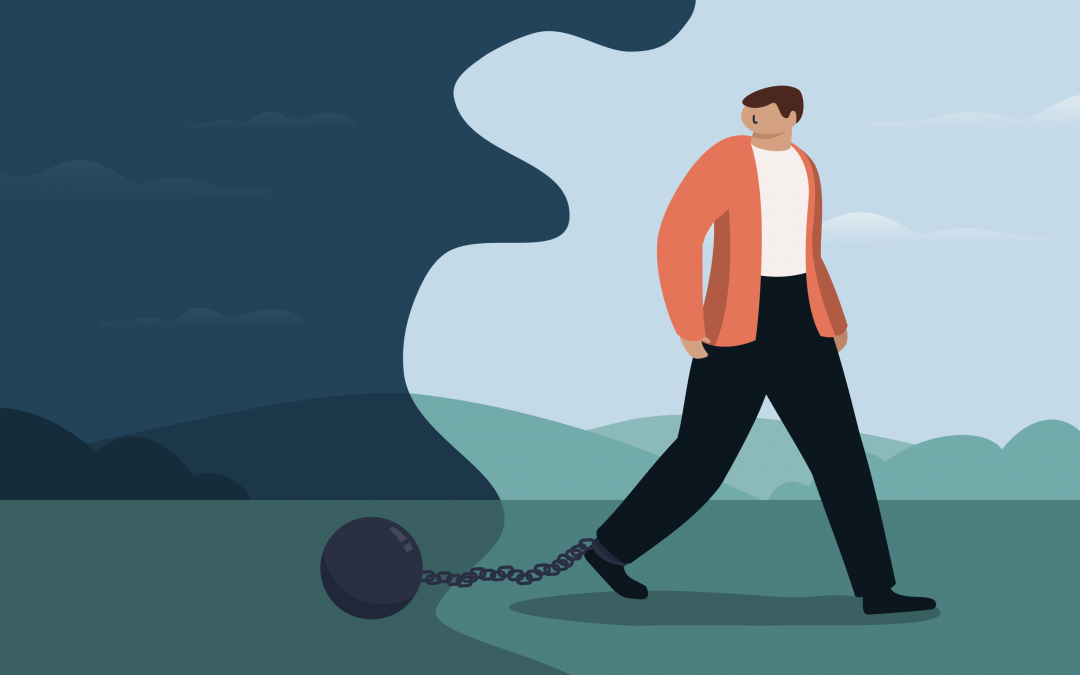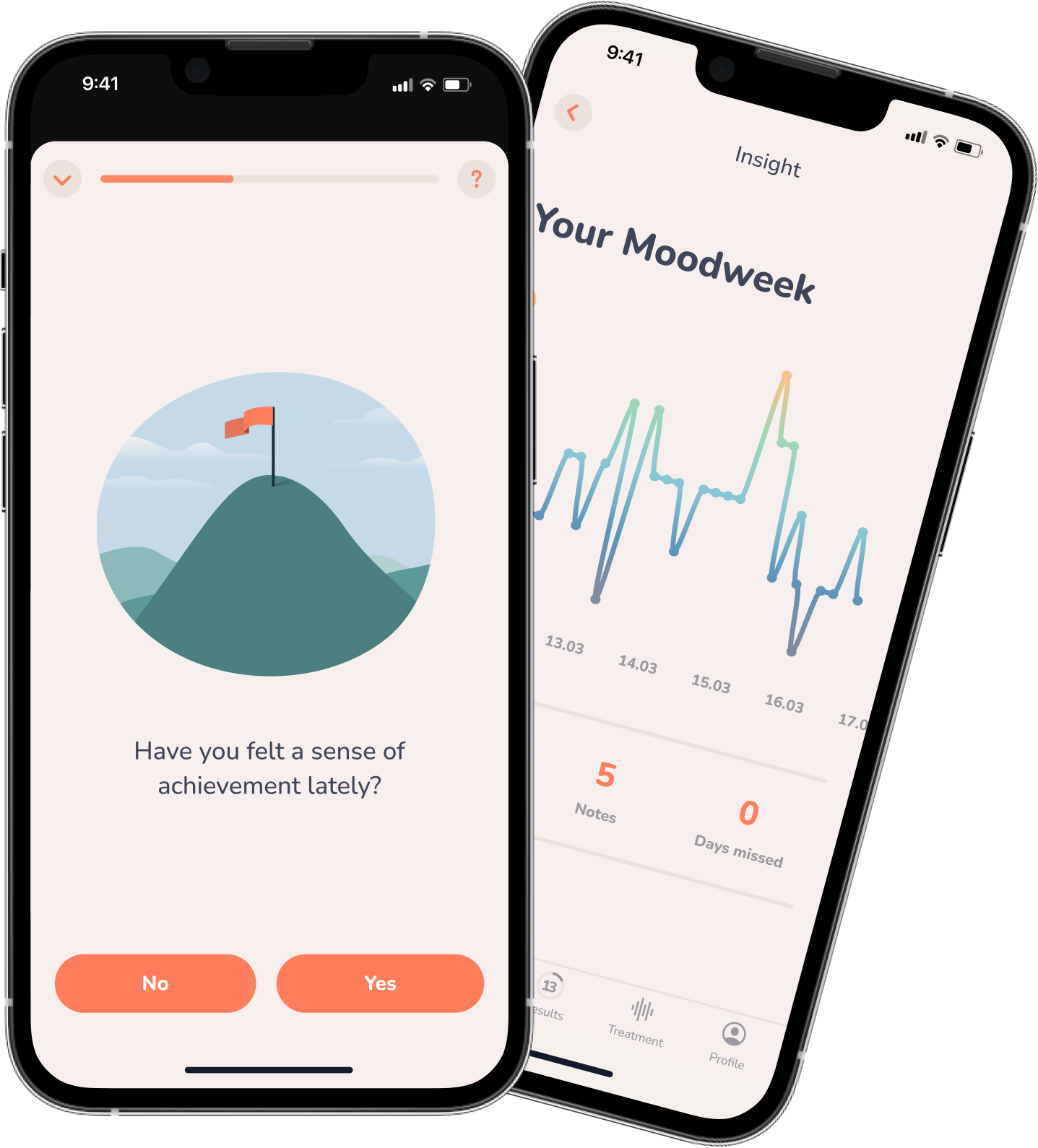Insight
Are Burnout and Depression Two Sides of the Same Coin?
A common assertion when considering the difference between burnout and depression is that the former is only a euphemism for the latter. Burnout like depression, after all, can lead to self-blame and feelings of inner emptiness, low mood, and pessimism. Is burnout really just another way of saying someone’s depressed?

Our Working Environment and the Fear of Failure
Burnout is a relatively new occurrence that was first publicly discussed in the 1970s. The term arose in relation to social and caring professions: Especially social workers seemed to be more susceptible to “burning out” due to the extreme workload. Today, however, burnout is being used more and more in association with managers in the business world than with nurses or social workers.
And it is true that, very often, burnout can hide an underlying depression or actually be another way of describing depression. Many may choose “burnout” over “depression” because there’s less of a stigma attached. In fact, it implies past achievements and hard work. More commonly, unfortunately, depression is associated with weakness.
However, when one looks closely at burnout and depression, they’ll find that the symptoms are suspiciously similar.
Burnout Is Not an Independent Illness
The term “burnout,” however, does not appear as its own condition in the diagnostic codes catalog used by healthcare practitioners. Rather, it is an additional diagnosis, given in combination with another illness. You can still receive time off from work on the basis of an additional diagnosis, but it is not considered a separate disorder.
The symptoms of burnout aren’t clearly defined, and the official definition is surprisingly vague: “problems related to life-management difficulty .”
In a revision of the catalog, which is expected to be published in 2022, more detailed characteristics of burnout have been included for the first time:
Burn-out is a syndrome conceptualized as resulting from chronic workplace stress that has not been successfully managed. It is characterized by three dimensions:
- Feelings of energy depletion or exhaustion
- Increased mental distance from one’s job, or feelings of negativism or cynicism related to one’s job
- Reduced professional efficacy
Additional Diagnoses and Therapy
Other examples of additional diagnoses, like burnout, are “lovesickness” or “occupational exposure to noise.” However, life crises or very difficult situations do not lead to mental disorders. Only when a person develops a depression, perhaps as a result of these difficulties is a diagnosis made that necessitates treatment.
For someone who is on the brink of burnout, a week away can work wonders, while a vacation for a person in a depressive episode might even worsen the symptoms.
Burnout Sees the Cause, Depression Counts the Symptoms
Unlike burnout, the symptoms of depression are clearly defined. Internationally, they are the same. When diagnosing depression, a doctor or psychotherapist uses only the patient’s symptoms.
Unlike for burnout, the context or circumstances for these symptoms is not part of the diagnosis itself. For a burnout diagnosis, however, context is central. And so, the individual phases of increasing exhaustion are regarded as an explanation model.
Although the clinical picture is virtually the same, when the cause of deep emotional and physical exhaustion is permanent work overload, some experts today prefer to call it burnout rather than depression.
Burnout Is Not Imagined
Although there is no independent burnout diagnosis, this in no way means that those affected are making up their suffering. The symptoms of people affected by burnout are very real and show up in a recognizable pattern.
While depression can either be slow, or sudden and seemingly unfounded, burnout usually develops gradually with predictable, consecutive phases (These phases total three to six depending on the study).
Stage 1 of Burnout: Overworking
The trigger for the burnout process is usually a phase in which those affected invest an excess of energy. This could stem from a passion for the work: In this scenario, you work hard for a period of time often to the exclusion of other activities in your life.
However, the huge expenditure of time and energy on work could also be based in worry: Maybe it’s a fear of rejection or of not being able to finish a project on time. In this first phase of overworking, the threat of burnout is rarely recognized. However, one warning sign might be a difficulty ‘switching off’ for free time.
Stage 2 of Burnout: Indifference
When hard-earned rewards are postponed over and over again, the initial eagerness will turn into frustration. Commitment will decrease, while expectations grow. Those affected may develop feelings of reluctance toward their work, sometimes approaching it with resignation. Work becomes routine and pointless and the person affected may feel emotionally dull, cynical, or less sensitive toward friends and co-workers.
In caring or social professions, for example, nurses or teachers may no longer respond to the problems of patients or students.
People struggling with burnout may react emotionally, even aggressively, to their environment, or may start blaming themselves. In the latter case, the symptoms are nearly indistinguishable from depression.
Stage 3 of Burnout: Despair
Reduced motivation also reduces the willingness to perform. Those experiencing burnout are less able to concentrate, make more mistakes, are less creative, and feel unable to cope with everyday life. Additionally, they can be indecisive and feel increasingly indifferent. Overworking can also result in people withdrawing socially and neglecting other activities they used to enjoy. Boredom and lethargy can set in.
Physical symptoms often go hand in hand with psychological ones. Backaches or headaches, digestive problems, sleep disorders, nightmares, and sexual problems are all typical of someone experiencing burnout, as well as depression. This last stage of burnout, then, has all the common symptoms of depression, making the two practically identical. One literally feels “burned out,” with little hope of improving.
Splitting Hairs or Helping?
In the end, burnout and depression are practically the same thing. That creates a problem, however: If the term burnout is used excessively, we’re running the risk of watering down a depression diagnosis. At the same time, an additional diagnosis also brings its advantages: This way, it’s often a bit easier for people to share their struggles with others. This can be especially true for males who feel pressured by society not to show “weakness.”
Moving Forward
All of this shows that we need to work towards fully accepting depression as a society, in the way we accept burnout. Therefore, the warning signs, no matter what you call them, should be taken seriously.
The good news? There are many treatment options that have proven effective for burnout, including talk therapy, conflict and stress management, self-management techniques that help increase self-confidence, and relaxation exercises.

Trauma Consequences: Post-Traumatic Stress Disorder (PTSD)
Traumatic experiences like accidents, violence, or severe illnesses are extremely stressful and can push people to their limits. As a result of trauma, some affected individuals develop post-traumatic stress disorder (PTSD).

People-Pleasing — When the Fear of Rejection Becomes a Trap
Are you a person who places a high value on kindness, consideration and helpfulness? Or … maybe you tend toward what’s called “people-pleasing”?

Psychological Needs in the Workplace: How to Meet Them
Deadlines, conflicts, pressure to perform—many people grapple with stressors at work. The extent to which these weigh on someone depends in large part on whether psychological needs are being met at work.

High-Functioning Depression: The Hidden Suffering
When people think of depression, usually intense sadness, low energy, social withdrawal, difficulty getting out of bed, and managing daily life come to mind. But this is not always the case.



